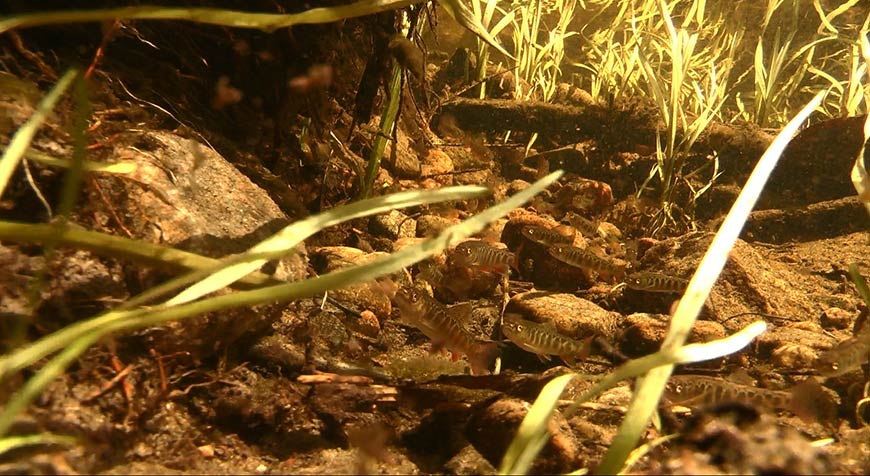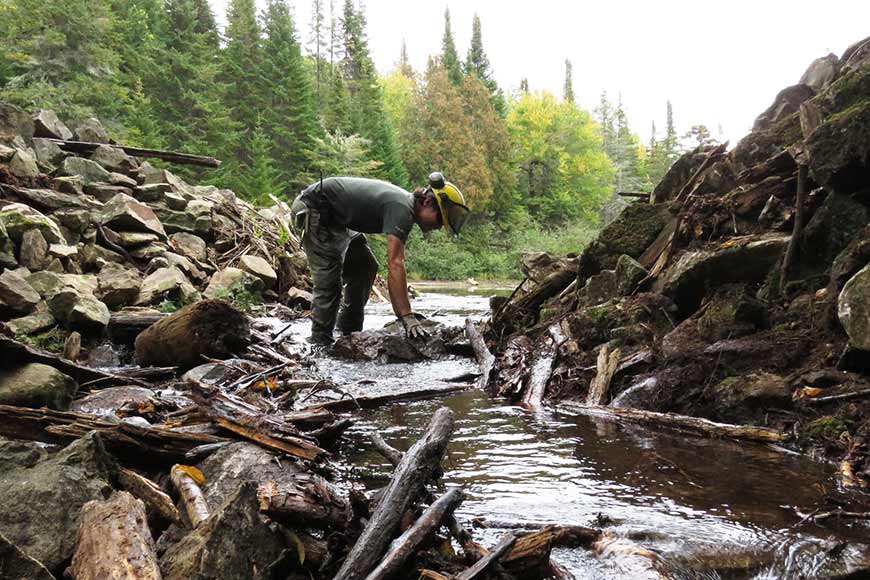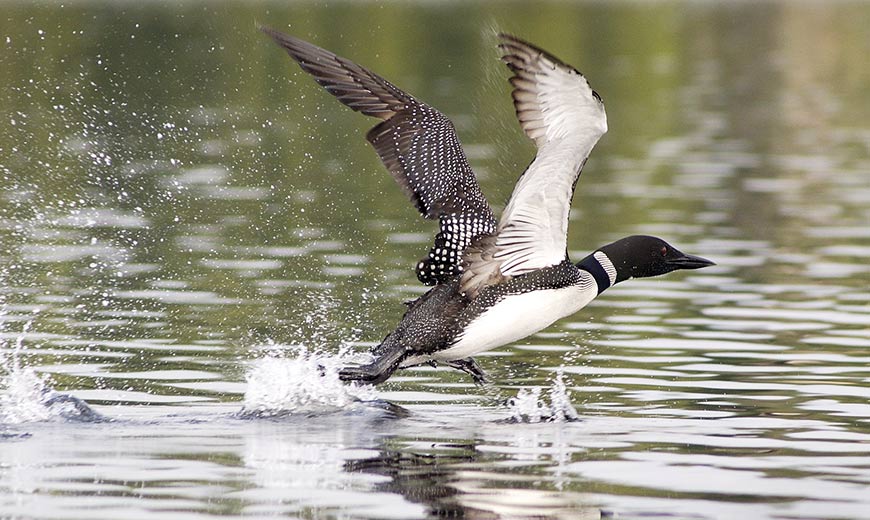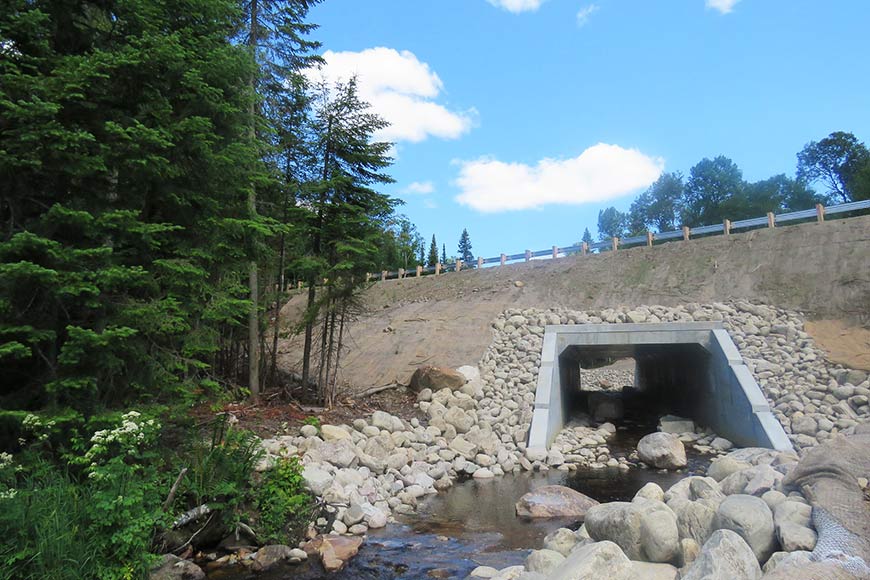
Freshwater
La Mauricie National Park
Lakes and other waterways are essential components of the ecological integrity of La Mauricie National Park. From tiny insects to birds and large mammals such as moose, the multiple habitats making up the park’s aquatic ecosystems are home to a wide variety of living creatures.
The park’s lakes are a paradise for canoeing and kayaking and are great for recreational activities, making them excellent places for visitors to get closer to nature. To make sure that the park’s lakes and other waterways remain healthy, five important ecological indicators are monitored:
1. Brook trout populations

The brook trout was once present in over a hundred lakes throughout the park. But after the logging era, the introduction of new species of fish and fishing during the private club era, several populations disappeared. Today, only a few lakes are inhabited exclusively by brook trout.
The presence of competing species of fish poses a significant threat to brook trout populations and therefore to the ecological integrity of the aquatic systems of La Mauricie National Park.
The following data is used for monitoring:
- Number of unique populations (in allopatry)
- Number of lakes with brook trout
Shortly after the park was created in 1970, brook trout were still found in about sixty lakes, although sometimes in very small quantities. To restore the species to its rightful place in the park, it was reintroduced into several lakes after non-native fish were removed, where necessary.
Water quality is an excellent indicator of the ecological integrity of a lake and its ability to provide favourable habitats and the resources necessary for the survival of the various plant and animal species found in its waters. Of the park’s 150 lakes, 50 are monitored. Each year, the water quality of 10 different lakes is analyzed over a 5-year period. Some of the aspects being monitored include pH, and conductivity, providing an indication of the lake’s richness in nutrients and minerals. As a result of monitoring, it was found that air pollution has contributed to the acidification of the lakes over the years. This has negatively impacted the quality of the park’s aquatic ecosystems. The aquatic ecosystem restoration program is helping to improve water quality. Did you know there are approximately 62 dams in the park? These vestiges of the logging era have had a significant impact on the water levels of lakes and other waterways. In the long term, a rise in the water level leads to: Dams can also create obstacles to the free passage of fish. For this reason, removing dams helps to re-establish connections between waterways, restore water levels and improve ecological integrity as a result. Loons are sensitive to the impact of pollution and climate and environmental change. The presence of breeding loons, the number of nests and the presence of young loons are indicators used to assess the health of lakes and the ecological integrity of the park in general. In order to determine loon populations, two inventories are conducted—one in June, during the nesting season and one in August, during the chick-rearing season. A total of 17 lakes are canoed to confirm the presence of territorial loon pairs and to evaluate their reproductive success. The data collected is used to monitor the population and its reproductive rate, identify conflicts with visitors and design protective measures. Visitors can also take part in the Counting for Loon Protection program by recording and reporting their observations. The many protective measures put in place by La Mauricie National Park have documented an increase in loon populations since the monitoring program was implemented. They are not always visible, but nearly 500 culverts, small and large, are hidden beneath the Parkway and trails in La Mauricie National Park. These culverts are located in the aquatic habitat and are essential to the free circulation of water and fish. Over the years, culverts can become damaged or filled with sediment and consequently make life very difficult for fish. The purpose of this measure is to monitor the condition of culverts based on specific criteria and to establish a condition indicator to be used across the park. The condition indicator was implemented in relation to the standards regarding the free passage of fish and sedimentation of Fisheries and Oceans Canada and Quebec’s Ministère des Ressources naturelles et de la Faune. 2. Water quality

3. Old dams

4. Common loons

5. Condition of bridges and culverts

Related links
- Date modified :